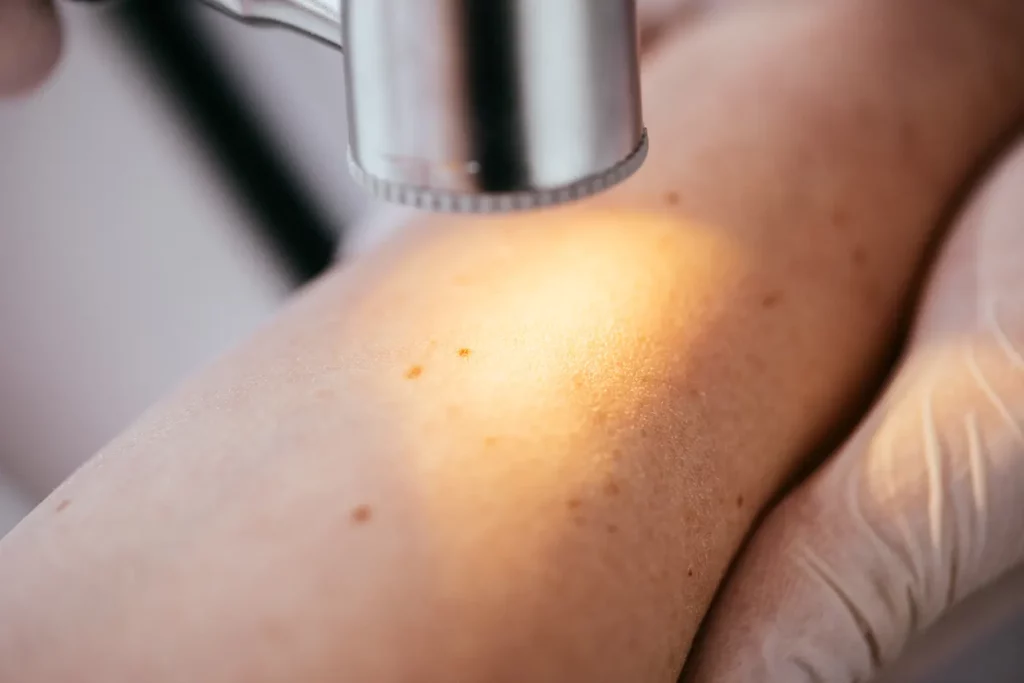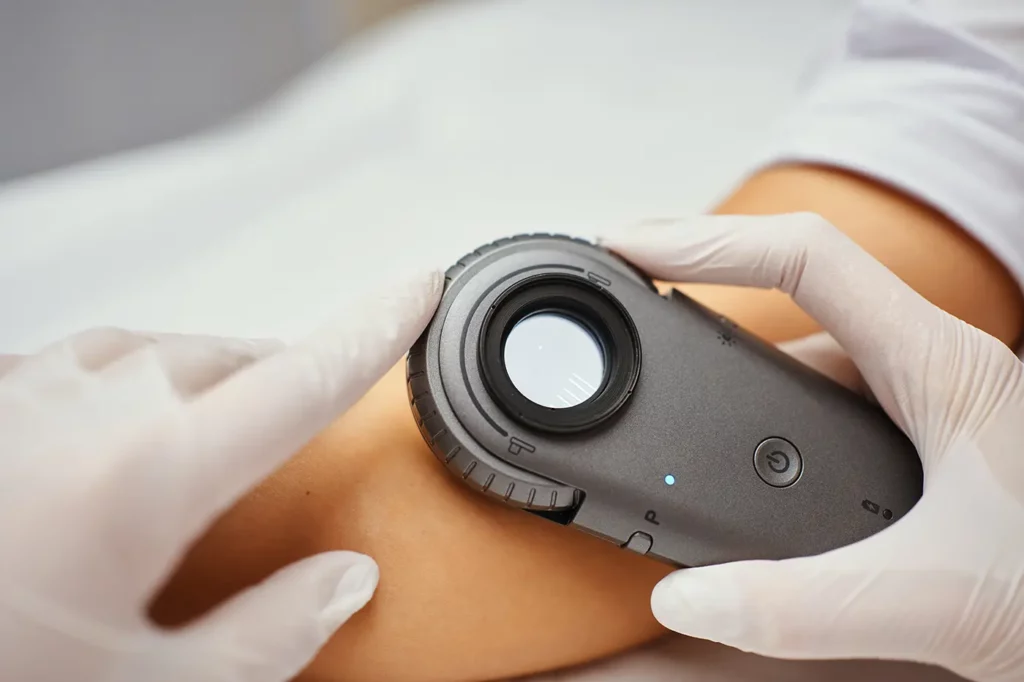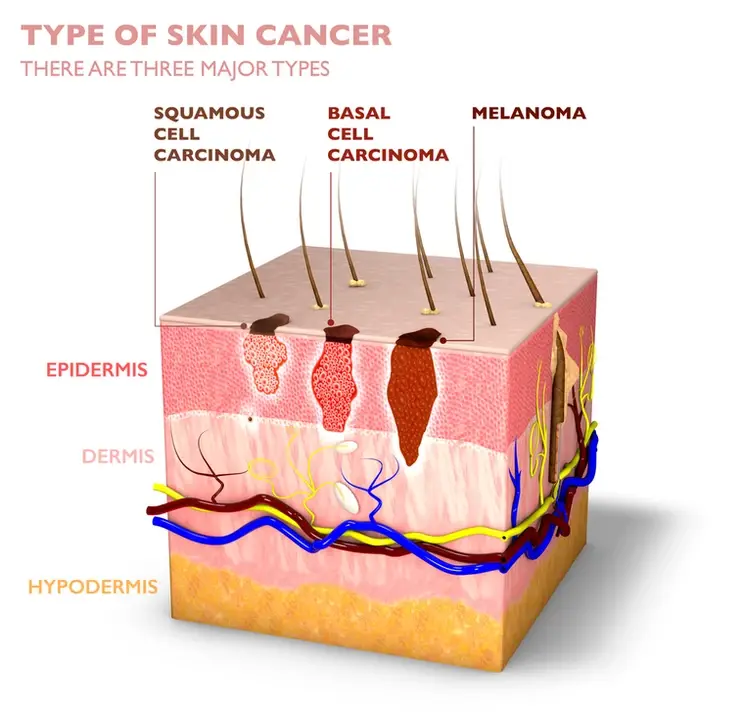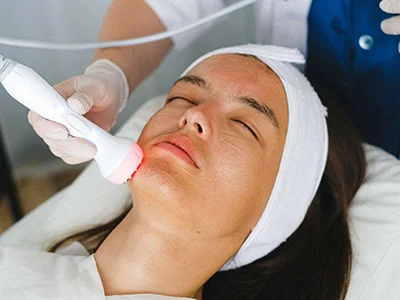Skin cancer is one of the most common types of cancer worldwide, with millions of new cases diagnosed each year. While the thought of skin cancer can be frightening, early detection plays a vital role in improving outcomes. By understanding the key signs to watch for and taking proactive steps towards prevention, individuals can significantly reduce their risk of developing advanced skin cancer. In this blog post, we will explore the importance of early detection in skin cancer and provide valuable insights on how to recognize the signs and symptoms early on.
Understanding the Various Types of Skin Cancer
Navigating through the realm of skin cancer requires a foundational understanding of its primary forms: melanoma, basal cell carcinoma, and squamous cell carcinoma. Melanoma is known for its potential to spread to distant organs, making early detection important for effective treatment. Basal cell carcinoma and squamous cell carcinoma, while more common, generally affect the outermost layers of the skin. These types are often the result of cumulative sun exposure, highlighting the importance of vigilance in areas frequently exposed to sunlight.
Melanoma may appear as a mole that changes in symmetry, border, color, and size. Recognizing these signs early can significantly increase treatment efficacy. Basal cell carcinoma, the most common type, and squamous cell carcinoma typically present as changes in the skin’s surface texture or color, ranging from red, scaly patches to pearly nodules.
Understanding the diversity in the appearance and behavior of these skin cancer types underscores the necessity for a thorough and informed approach to skin examinations. Equipping oneself with the knowledge of what constitutes normal versus suspicious can empower individuals to seek timely medical advice, paving the way for interventions that can address these conditions effectively.
Recognizing the Early Signs of Melanoma
Melanoma often starts its journey disguised as a benign mole on the skin. Its early indicators, however, are distinct and can act as critical alerts for those vigilant about their skin health. The signs of melanoma include asymmetry, where one half of the mole does not match the other, and irregular borders that appear blurred or jagged. The color of a mole evolving into various shades or becoming unusually dark is another red flag. Additionally, a diameter larger than that of a pencil eraser warrants attention, as does any change in size, shape, or elevation.
Less commonly discussed but equally important are sensations of itching, tenderness, or pain in a mole, as well as the development of a new mole that looks different from others. These symptoms signal the need for a closer examination. Melanoma can appear anywhere on the body—not just in sun-exposed areas. Hence, an all-encompassing skin check becomes imperative, including those regions not immediately visible or commonly overlooked.
Everyone, regardless of skin color or lifestyle, should be proactive in monitoring their skin. Engaging in regular self-examinations and becoming familiar with your skin’s landscape can make a significant difference. If you encounter any of the described changes, the next step is seeking a professional evaluation. A dermatologist can provide a thorough assessment, distinguishing between benign irregularities and potential melanoma.
Identifying Basal and Squamous Cell Carcinomas
Basal and squamous cell carcinomas, while less aggressive than melanoma, require attention due to their prevalence and potential to cause significant skin damage if not addressed promptly. These cancers usually manifest as anomalies on the skin’s surface. Basal cell carcinoma often presents as pearly or waxy bumps, sometimes resembling a flesh-colored mole that refuses to heal. Squamous cell carcinoma tends to assert its presence more boldly, with rough, scaly patches that may crust or bleed.
Identifying these conditions starts with keen observation of one’s skin. These carcinomas favor sun-exposed parts of our bodies—the face, neck, and hands. However, their occurrence is not limited to these zones alone, underscoring the necessity of a thorough skin check.
While basal and squamous cell carcinomas might appear less menacing, their capacity to invade surrounding tissues and, in rare cases, metastasize, cannot be underestimated. This potential underscores the importance of not dismissing any skin irregularity as trivial.
The Significance of Skin Changes and New Growths
Changes in the skin can be more than just superficial alterations; they can indicate underlying health issues, including skin cancer. New growths or shifts in the skin’s appearance are critical indicators that warrant a closer look and sometimes immediate action. A new growth, a sore that defies healing, or a mole that evolves in color, size, or texture may be the first sign of a deeper issue.
These changes demand attention. Engaging with our skin and acquainting ourselves with its contours and patterns becomes a proactive step towards safeguarding our health. A dermatologist can discern the significance of these changes, offering clarity and direction.
Every irregularity merits attention as an opportunity for early intervention. Recognizing the significance of these skin changes and new growths emphasizes the power of observation and the impact of early detection.
Risk Factors for Developing Skin Cancer
Understanding the factors that elevate the risk of skin cancer is crucial for prevention and self-awareness. Excessive sun exposure is a significant risk factor. The sun’s UV rays can promote cellular damage leading to skin cancer. Strategizing encounters with the sun and using protection can mitigate this risk.
A family history of skin cancer suggests a genetic predisposition, highlighting the importance of vigilance. Fair complexions offer less melanin protection against UV damage, necessitating amplified defense strategies.
The immune system also plays a role. When it falters due to disease or immunosuppressive medications, the risk of cancerous mutations increases. This vulnerability invites a proactive stance on health.
Understanding these risk factors empowers individuals to navigate the terrain of risk and make informed choices. Each factor unveils an opportunity for intervention, painting a picture where informed choices and proactive measures cast a protective veil against skin cancer.
The Importance of Regular Skin Self-Examinations
Regular skin self-examinations are essential for early skin cancer detection, acting as a first line of defense. By committing to monthly skin checks, you can spot subtle nuances of change that could signify a more serious issue.
Initiating self-examinations involves a methodical approach, surveying every inch of skin. This practice fosters an intimate knowledge of your body’s canvas, allowing for timely interventions should any aberrations arise.
Equally critical is transitioning from self-care to professional care when necessary. Consulting with a dermatologist can offer clarity and peace of mind, translating your observations into actionable insight.
When to Consult a Healthcare Professional
Understanding when to transition from self-observation to professional consultation is crucial. The appearance of new growths, changes in moles, or persistent sores signal the need for expert guidance.
Dermatologists, with their specialized training, can distinguish between benign and worrisome lesions. Engaging with a dermatologist at the earliest sign of change is an essential step in proactive health management.
Consulting a healthcare professional becomes an empowering action, emphasizing the importance of vigilance and timely evaluation.
Preventative Measures to Protect Against Skin Cancer
Adopting preventative measures is a cornerstone strategy in protecting against skin cancer. Daily use of sunscreen with an SPF of 30 or higher, wearing protective clothing, and seeking shade during peak sun hours are critical practices.
Avoiding indoor tanning beds and integrating skin cancer screenings into your healthcare regimen also play significant roles in prevention.
By weaving these measures into daily life, individuals can create a protective shield against skin cancer, exemplifying a holistic approach to health.
The Impact of Early Detection on Skin Cancer Outcomes
Early identification of skin cancer significantly impacts treatment outcomes. Early detection allows for less invasive interventions, minimizing the physical and emotional toll on the individual.
This proactive partnership between individuals and healthcare professionals highlights the importance of early detection and preventive care.
Resources and Support for Those Affected by Skin Cancer
Navigating a skin cancer diagnosis can be challenging, but a wealth of resources and supportive communities are available. Support groups, educational resources, and financial assistance programs provide emotional comfort, practical advice, and clarity.
Leveraging these supports can help individuals affected by skin cancer navigate their journey with a reinforced sense of strength and community.




